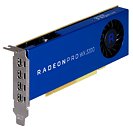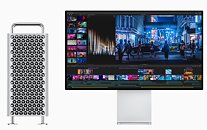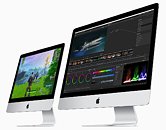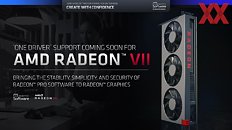
AMD Introduces Radeon Pro W5500 Professional Graphics Card
AMD today announced the AMD Radeon Pro W5500 workstation graphics card, delivering the performance and advanced features demanded by today's Design & Manufacturing and Architecture, Engineering & Construction (AEC) professionals. AMD also announced the AMD Radeon Pro W5500M GPU, designed and optimized to power next-generation, high-performance professional mobile workstations. Today's design and engineering workforce pushes the boundaries of professional design applications. These increasingly mobile professionals often use multiple graphics-intensive applications simultaneously and require no-compromise performance to visualize, review and interact with their designs in real time.
AMD Radeon Pro W5500 graphics harness the high-performance, power-efficient AMD RDNA architecture, 7 nm process technology, high-speed GDDR6 memory, high-bandwidth PCI Express 4.0 support and advanced software features. Expanding the AMD family of high-performance professional graphics products, they offer outstanding performance in real-world applications, rock-solid stability and superb energy efficiency. In addition, the AMD Radeon Pro W5500 graphics card delivers incredible multitasking performance even in demanding situations, such as allowing professionals to continue developing their designs while rendering a visualization in the background.
AMD Radeon Pro W5500 graphics harness the high-performance, power-efficient AMD RDNA architecture, 7 nm process technology, high-speed GDDR6 memory, high-bandwidth PCI Express 4.0 support and advanced software features. Expanding the AMD family of high-performance professional graphics products, they offer outstanding performance in real-world applications, rock-solid stability and superb energy efficiency. In addition, the AMD Radeon Pro W5500 graphics card delivers incredible multitasking performance even in demanding situations, such as allowing professionals to continue developing their designs while rendering a visualization in the background.




















